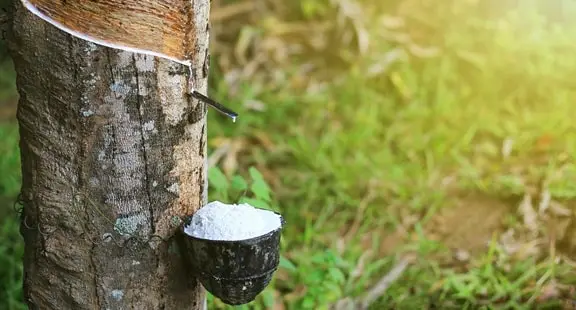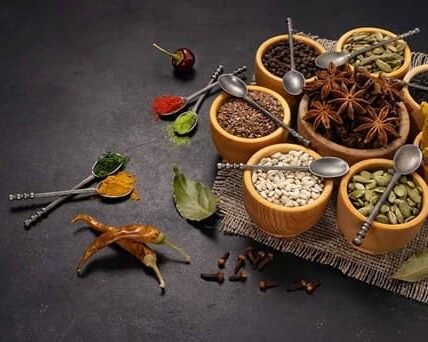Rubber production in India not only leads towards the growth of the nation’s economy but also acts a prominent contributor towards the overall rate of rubber provisions in the global market. Cultivation is distributed among different states, each having its characteristic climatic features and particular methods of agribusiness. The year 2024 sees some states leading as the largest contributors to India’s rubber production. In this case, we get to find out the top 5 largest contributing states in rubber production, their significance and kind of cultivation they practice, and finally, the economic impact that the rubber industry offers them.
Highest Rubber Producing States In India

1. Kerala: (4,55,000 tons)
Kerala, the “Rubber Capital of India,” is the largest rubber producer. Kerala’s tropical environment, enough rainfall, and evenly distributed temperatures are ideal for rubber growth. Kottayam, Pathanamthitta, and Kollam have the most rubber plantations, where smallholdings and estates produce a diverse and dynamic rubber ecosystem. Rubber is vital to Kerala’s economy and beyond. The Kerala rubber industry fosters economic growth and employment by expanding agriculture. Kerala is unique in its rubber production, ecological farming, and technology. Kerala leads rubber manufacture with this dual approach. Kerala is the biggest rubber producer, producing 4,55,600 tons annually. Kerala is India’s rubber supplier. Kerala’s rubber sector is popular, with many efficient and high-quality plantations.
2. Karnataka: (40,000 tons)
It’s abundant agricultural has made Karnataka a significant rubber producer in India. Dakshina Kannada, Chikmagalur, and Shimoga have advanced rubber farming, making Karnataka a major rubber producer. Karnataka’s many agro-climatic zones allow rubber plants thrive, demonstrating its rubber industry diversity and importance. Third in India in rubber production, Karnataka offers 40,000 tons. It has rubber factories in Chikmagalur, Hassan, Mysuru, Kodagu, and Kannada. These companies produce rubber over vast territory, improving Karnataka’s rubber market position. Rubber production has grown, turning barren land into lush plantations, indicating the industry’s growth and economic advantages. For Karnataka’s economy, rubber plantations on unused land show its vitality.
3. Tripura: (37,000 tons)
Tripura has been a prominent rubber manufacturer in India. Good agro-climatic conditions in West and South Tripura support rubber growing. The government’s active promotion of rubber as an alternative to traditional crops has spurred rubber sector growth. This innovative strategy boosts Tripura’s agricultural economy and generates work for small farmers. Sustainable agriculture and rubber plantation expansion imply the state might become a major Indian rubber producer. The Tripura rubber industry produces 37,000 tons yearly. Rubber manufacture started in 1963 under the State Forest Department. Kerala produces the most rubber in India, followed by Tripura at 9%. Tripura’s national rubber market share is strengthened by this high proportion.
3. Assam: (30,350 tons as per 2019)
Assam consciously used its biodiversity and rich soils to become a rubber powerhouse. The state’s large Brahmaputra Valley is suited for rubber manufacturing. Rubber estates in Golaghat and Karbi Anglong make Assam a rubber powerhouse.
In Assam, rubber cultivation supports sustainable agriculture and environmental protection. Rubber production improves the state’s economy and employs people. Rubber production is environmentally friendly and profitable, exhibiting Assam’s sustainable agriculture.
In Assam, the rubber production was 30,350 tons in the year 2019. This massive land grant reflects the state’s rubber industry commitment. The industry grew in Assam last year, producing 5,000 tons of rubber latex. Rubber farming is profitable for many in the state. Rubber fields in Guwahati’s outskirts, which fuel Assam’s economy, are beautiful.
4. Tamil Nadu: (21,600 tons as per 2020)
Tamil Nadu produces most rubber in India due to its diverse agro-climatic conditions. Kanyakumari, Tirunelveli, and Western Ghats foothills contain rubber plantations. This industry has grown due to the state’s agro-based rubber production. Rubber boosts Tamil Nadu’s agriculture and offers farmers a valuable crop. Rubber cultivation research ensures industrial sustainability and economic growth in the state.
Rubber cultivation covers 21,600 tons of production as per 2020 in Tamil Nadu. This vast land grant promotes the state’s rubber sector. Kanyakumari produces 98% of state rubber. Its huge rubber fields boost Tamil Nadu’s rubber production. Tamil Nadu’s rubber is crucial to the global rubber industry, both domestically and globally. State rubber production boosts international demand.
Rubber Production FAQ:
Q. What are the problems with rubber cultivation in India?
Ans: A study indicated that rubber producers faced several challenges that impacted their livelihoods. Climate change, price fluctuations, and skilled workforce shortages are the biggest issues. Together, these challenges prohibited farmers from sustaining their families.
Rubber price fluctuations are a key concern, says the research. Rubber growers’ income fluctuates with market prices, generating financial instability. Market instability makes it hard for producers to earn a living.
Climate change is another rubber farmer concern. Weather fluctuations like rainfall and temperature may harm rubber plants. Weather may reduce rubber output and quality. Climate issues hinder rubber growers’ livelihoods.
Q. What is the market of rubber in India?
Ans: Rubber & Plastics are projected to reach $10.15 billion by 2023. From 2023 to 2028, this estimate predicts 7.98% CAGR. Production of Rubber & Plastics is expected to reach US$54.61 billion in 2023.
Market growth potential is shown by the predicted US$10.15 billion value addition. The value-added segment’s 7.98% compound annual growth rate during the forecast timeframe is promising. Technology, market breakthroughs, and client preferences are driving Rubber & Plastics’ growth.
Q. Is rubber native to India?
Ans: Rubber is vulcanized from sap. Rubber was originally from South and Southeast Asia, not India. Rubber plants were commercially planted nationwide because the rubber trade was lucrative.
Rubber production begins with sap collection. The following manufacturing stages require milky latex sap. Adding sulfur and heat to sap during vulcanization strengthens, stretches, and lasts rubber.
Due to the rubber trade’s success, South and Southeast Asian rubber plants came to India. India commercialized these plants because of the rubber industry’s economic potential. Rubber farming is successful in India due to its adaptive climate and soil.
Conclusion:
The top 5 largest rubber producing states in India are Kerala, Tripura, Karnataka, Assam, and Tamil Nadu respectively. These states exhibit adaptability of rubber cultivation with agro-climatic variations on one hand and a great contribution to socio-economic development on the other. The progress of the rubber sector in these states depicts a concoction of traditional agricultural practices and contemporary advancements which work in concurrence to underline the fact that the rubber industry is an inseparable part of the economic growth story of India. As such states continue to nurture and expand their rubber cultivation, they play a significant role on filling both domestic and global demands of this essential commodity.

Santosh Kumar is an editor at unfoldstuffs.com and a professional content writer. With years of experience he is passionate for creating engaging, informative and impactful topics.









